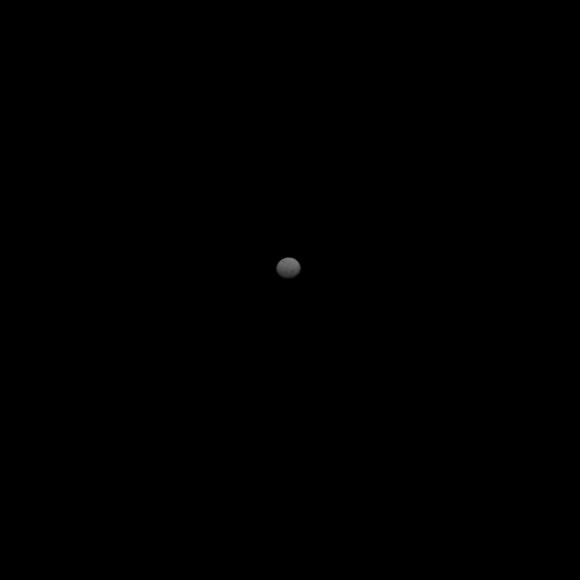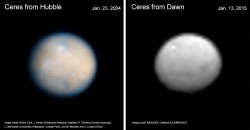Dawn Captures Best Images Ever of “Hipster Planet” Ceres

Animation of Ceres made from images acquired by Dawn on Jan. 25, 2015. (NASA/JPL-Caltech/UCLA/MPS/DLR/IDA)
NASA’s Dawn spacecraft is now on final approach to the 950 km (590 mile) dwarf planet Ceres, the largest world in the main asteroid belt and the biggest object in the inner Solar System that has yet to be explored closely. And, based on what one Dawn mission scientist has said, Ceres could very well be called the Solar System’s “hipster planet.”
“Ceres is a ‘planet’ that you’ve probably never heard of,”
said Robert Mase, Dawn project manager at NASA’s Jet Propulsion
Laboratory in Pasadena, California. “We’re excited to learn all about it
with Dawn and share our discoveries with the world.”
Originally classified as a planet, Ceres was later categorized as an asteroid and then reclassified as a dwarf planet in 2006 (controversially
along with far-flung Pluto.) Ceres was first observed in 1801 by
astronomer Giuseppe Piazzi who named the object after the Roman goddess
of agriculture, grain crops, fertility and motherly relationships. (Its
orbit would later be calculated by German mathematician Carl Gauss.)
“You may not realize that the word ‘cereal’ comes from the
name Ceres,” said Marc Rayman, mission director and chief engineer of
the Dawn mission at JPL. “Perhaps you already connected with the dwarf
planet at breakfast today.”
Ceres: part of this nutritionally-balanced Solar System!
The animation above was made from images taken by Dawn
framing camera on January 25, 2015 from a distance of about 237,000 km
(147,000 miles). These are now the highest-resolution views to date of
the dwarf planet, 30% more detailed than those obtained by Hubble in
January 2004.
And there’s that northern white spot
again too… seen in observations from earlier this month and in the
2003-04 HST images, scientists still aren’t quite sure what it is. A
crater wall? An exposed ice deposit? Something else entirely? We will soon find out.
“We are already seeing areas and details on Ceres popping
out that had not been seen before. For instance, there are several dark
features in the southern hemisphere that might be craters within a
region that is darker overall,” said Carol Raymond, Dawn deputy
principal investigator at JPL.

Full-frame image from Dawn of Ceres on approach, acquired Jan. 25, 2015. (NASA/JPL-Caltech/UCLA/MPS/DLR/IDA)
From now on, every observation of Ceres by Dawn will
be the best we’ve ever seen! This new chapter of the spacecraft’s
adventure has only just begun.
Dawn is scheduled to arrive at Ceres on March 6.

No comments:
Post a Comment